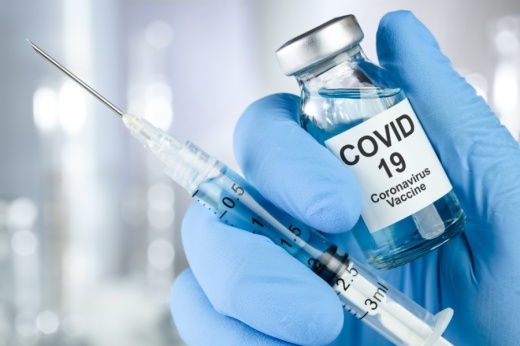The revelation came to light during a Feb. 11 Texas Department of State Health Services press conference, which also served to update details of the state's COVID-19 vaccine rollout.
Imelda Garcia, associate commissioner for laboratory and infectious disease services, said that so far, more than 3.66 million doses of the vaccine have been administered by providers in Texas since December—up more than 900,000 since Feb. 4—and that the DSHS expects to have fully vaccinated 1 million Texans by Feb. 12.
The Federal Emergency Management Agency will also begin helping operate vaccine sites in North Texas and Houston areas soon, and Garcia said the agency expects to vaccinate up to 12,000 people per day—6,000 at the Houston site, 3,000 at the Arlington site and 3,000 at the Dallas site, Garcia said.
However, the marquee topic for DSHS was the filing by Johnson & Johnson for emergency use authorization of its vaccine—a move that does have implications for Texas.
Dr. Saroj Rai, a scientific advisor for DSHS, said a third vaccine, in addition to the already-in-use Moderna and Pfizer vaccines, could soon add expediency to the state's vaccine effort.
"The important thing about this vaccine is it's a single-dose vaccine," Rai said. "It's different than Pfizer and Moderna's vaccine, which are both a two-dose vaccine."
Rai said once available, the Johnson & Johnson vaccine will be used for adults age 18 and older, and the emergency use filing is based on a Phase 3 study that tested about 44,000 participants and yielded a 72% level of protection against moderate to severe COVID-19 infection in the U.S.
"Furthermore, the vaccine candidate was 85% effective in the prevention of severe disease," she said.
Although the Johnson & Johnson vaccine has a lower efficacy rate in the U.S. compared against the Moderna and Pfizer versions, which stand at about 94%, Rai said it is important to note that there have been no deaths associated with the new vaccine.
She added that because the technology for the new vaccine is more durable and stable than the other two, the vaccine does not require the same ultra-low storage temperatures.
With regard to a timeline, the Food and Drug Administration has scheduled an advisory committee meeting for Feb. 26, and depending on how that goes, the Centers for Disease Control and Prevention would need to give a clinical recommendation from its advisory committee.
"So, the earliest time we're looking at right now is the first of March for the availability of this vaccine," Rai said. That date, she said, also applies for providers in Texas.
Based on clinical trials and available data, there are no unusual side effects associated with the Johnson & Johnson vaccine beyond soreness and chills, among other common symptoms, she said.
Also during the press conference, Garcia said plans to include a vaccination group beyond Phase 1B—patients over 65 and those with severe health vulnerabilities—are still in discussion, and there is no further information at this time. The addition of a Phase 1C largely depends on available quantities as well as on how fast the state can vaccinate those in Phase 1B.





